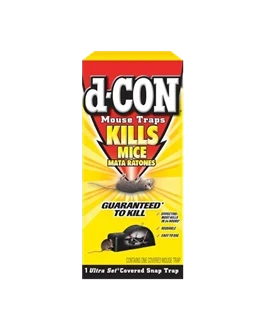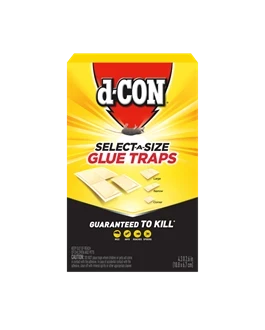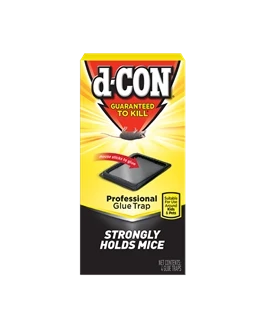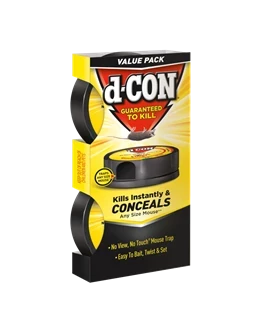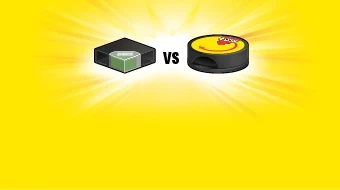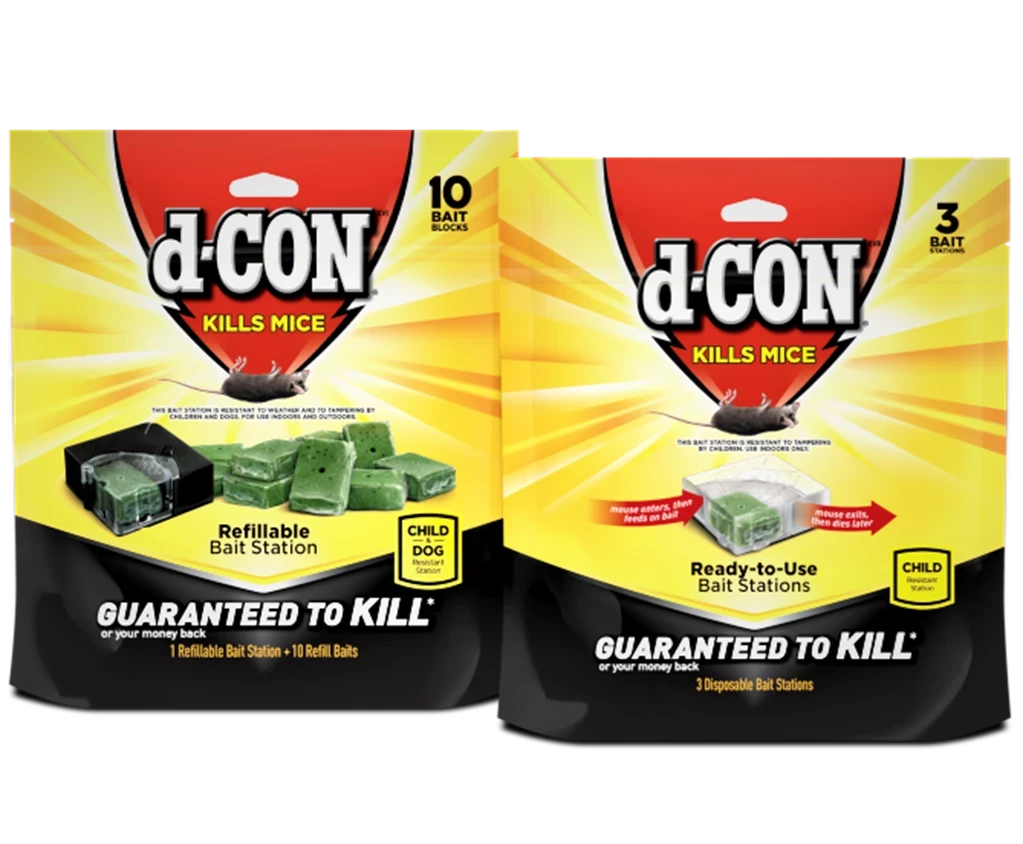Traps
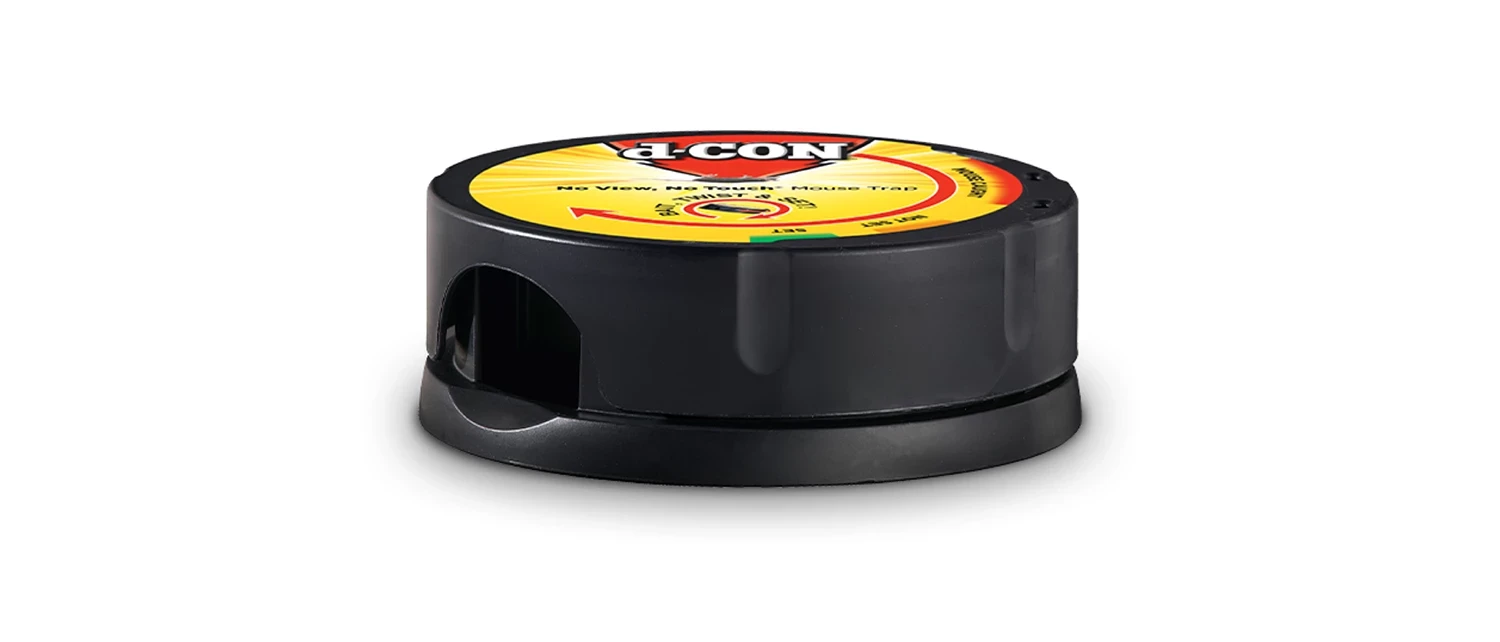
d-CON offers a selection of traps delivering proof of kill solutions. Select from d-CON Ultra-set re-usable covered traps or innovative No View No Touch spin traps, or d-CON professional strength sticky glue traps.
The learning center
Frequently asked questions
WHAT ARE THE DIFFERENT KINDS OF RODENT CONTROL?
The commercially available mouse and rat control products are effective and mostly falls into two categories; Baits (chemical method) and Traps (non-chemical). Baits are available in different shapes and sizes whereas widely used shapes are blocks which are to be used in a bait station. Baits should be used in low traffic, hard-to-reach areas such as basements, garages and attics. Baits are an ideal way to avoid contact with rodents. Once rodents eat bait, they leave the area and die outside. Baits are safe and highly effective if used according to directions. There are three types of key active chemical used in baits: 1) Acute: are the ones which acts instantly and results in mortality of rodent with in few hours. 2) Subacute: are the ones which results in mortality of rodent between 1-3 days 3) Chronic: are the ones which results in mortality of rodent in 4-10 days. The most widely commercially available products contains active chemicals from subacute (Vitamin D3 or Bromethalin) and chronic category (anticoagulants). Subacute chemicals have different mode of action e.g. Vitamin D3 cause hypercalcemia and Bromethalin is a neurotoxin. Whereas anticoagulants which falls under Chronic category, they prevent clotting of blood. Hence rodents die from internal bleeding or anemia. Traps are ideal for high traffic areas. Four types of traps are used commercially: 1) Snap traps, 2) Glue traps 3) Live traps and 4) Electric traps Snap traps are the traditional wooden design or covered traps, e.g. d-CON Ultra-Set covered traps, and they are baited with food like peanut butter, nuts or cheese. Snap traps are intended to be humanely lethal, but require disposal of a dead or injured rodent. These are used for multiple times. Glue traps contains nontoxic sticky glue. Rodents that walk onto glue trap become stuck in it. Glue traps rely on strategic placement along rodent runways and are thrown away once the rodent is caught. Glue traps are available in covered or uncovered form. These are mostly single use products. Live traps enable people to catch rodents and release them outdoors, rather than killing them. Live traps are usually used for catching mice and come in single or multi-animal designs. Electronic traps use electric current to kill the rodents. These can be used multiple times. For more information on how to use d-CON® products, you can watch the "How to" videos which will explain in detail the process for setting the baits. You can also find good information about rodent prevention in the Rodents 101 section.
HOW DO I KNOW IF I NEED TO USE BAITS OR TRAPS?
If you share one or more of the below preferences, you want to use BAITS. Do you want to avoid interacting with rodents in anyway (seeing, hearing, touching, smelling)? Would you prefer not to remove a dead rodent from the trap? If you share one or more of the below preferences, you want to use TRAPS. Do you want to see a "Proof of Kill"? Would you rather not risk having the rodent die without knowing where? Do you want to confirm that the rodent is dead?
HOW DO I KNOW IF HAVE A RODENT IN MY HOME?
Rodents are nocturnal creatures by nature, which means they rarely surface during the daytime hours unless their environment is disrupted. However, there are some signs you can look for: Mouse droppings, black, typically small (about 1/8 of an inch long). Rat feces tend to be a bit larger. Evidence of recent gnawing, especially on packaged goods, cardboard boxes and areas around pipes, ducts and vents. Your dog or cat pawing excitedly at a kitchen cabinet, the base of your refrigerator or a wall. Scampering or gnawing sounds. Burrows or nests in the ground along the outside of buildings. Read more about the signs for rodent activity at d-CON Academy.
WHERE SHOULD I PLACE MY MOUSE TRAP AND BAITS?
Place mouse traps and baits perpendicular to the wall and in dark corners, such as behind the stove, refrigerator, washer and dryer or where rodent activity is seen. It is wise to set baits and traps simultaneously in various spots in the home to ensure better control of the problem.
